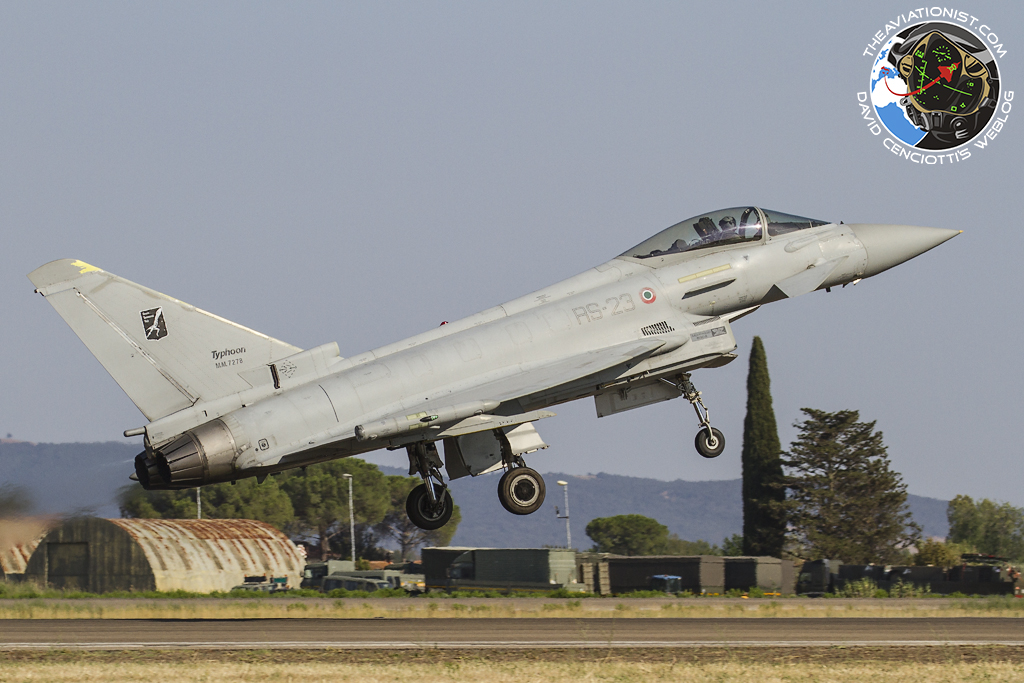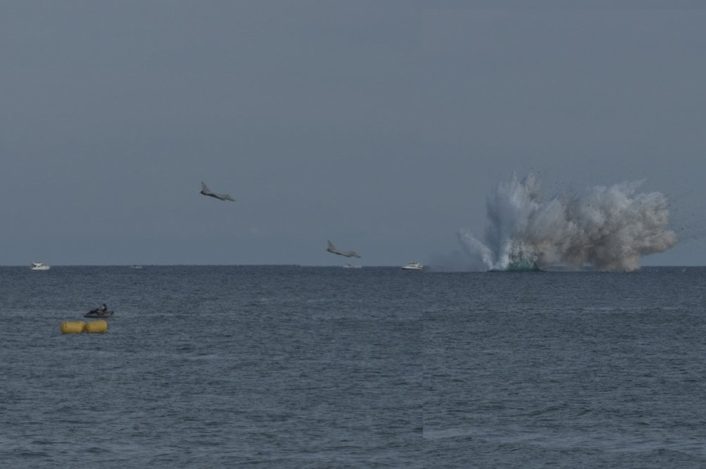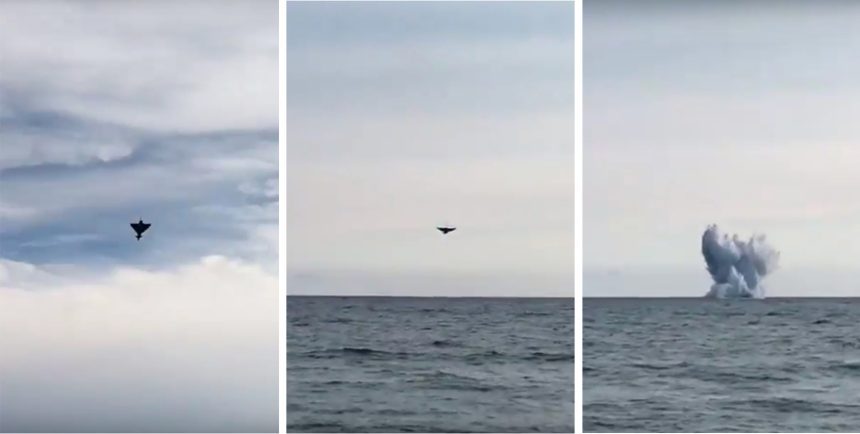An Italian Typhoon has crashed into the sea while performing its display during an airshow in Italy.
On Sunday Sept. 24, 2017, an Italian Air Force Eurofighter F-2000A Typhoon (most probably MM7278/RS-23) belonging to the Reparto Sperimentale Volo (Test Wing) has crashed into the sea at Terracina, 76 kilometres south of Rome.
Based on the several videos that have already emerged on social media, the pilot Capt. Gabriele Orlandi, for unknown reasons, was unable to /did not recover the aircraft at the end of a looping and didn’t attempt to eject from the jet.
Here below you can find a few clips that have been posted on Youtube so far. Many more are being uploaded on Twitter and Instagram as well:
The causes of the crash are under investigation, the Italian Air Force said in a press statement.

The following composite image was created using Photoshop and images posted on repubblica.it:

This is the second deadly crash of a Typhoon in little less than two weeks: a RSAF Typhoon combat aircraft involved in a mission against Houthi fighters over Yemen crashed into a mountain in Al Wade’a district on Sept. 13, 2017.
Top image credit: screenshots from Michele F. video









